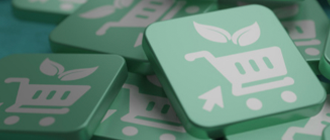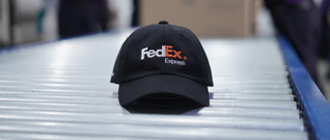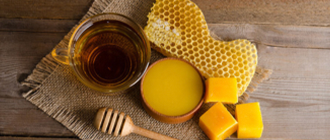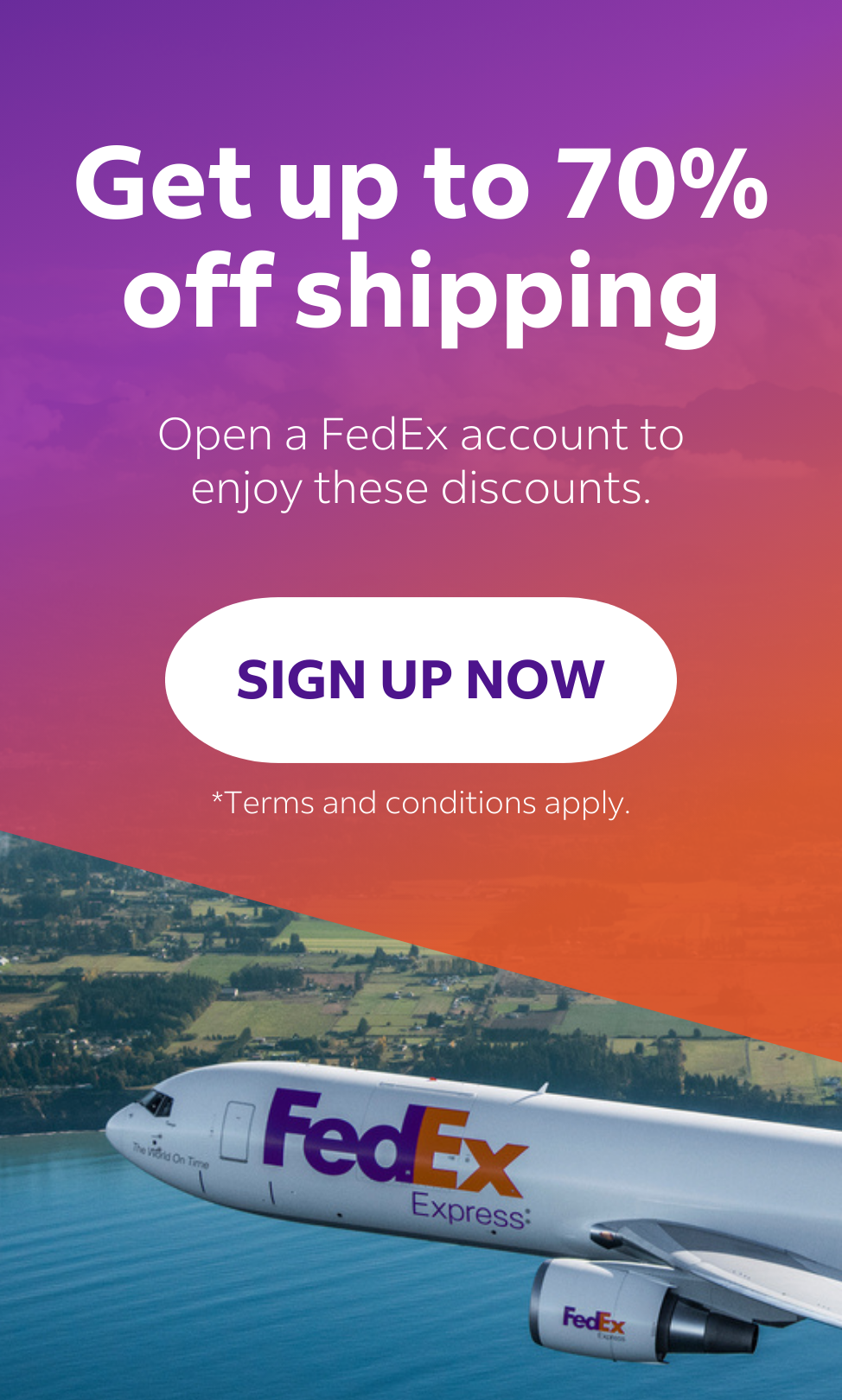
How To Turn Sustainable Ideas Into Impactful Products
By FedEx | September 13, 2023
Antoinette started SuperBee as a sustainable solution to combat plastic pollution. Rooted with local communities, her sustainable houseware brand is continuing to create worldwide buzz.
Antoinette Jackson moved to Thailand in 2011, where she quickly fell in love with its natural beauty and welcoming communities. When she saw that some of the country’s breathtaking beaches were facing a problem with plastic pollution, she became inspired to come up with a solution.
That’s where SuperBee came into being, a homegrown beeswax wrap brand that offers a sustainable alternative to plastic wrap. Eco-friendly, reusable, and made from locally sourced, natural resources, the brand soon took off and made its way all over the world.
But how did SuperBee evolve from a small business operating in a quiet rural village in Thailand to an international brand?
Learn more about her story and tips from starting a business to defining a new category:
1. What’s your advice for new entrepreneurs?
Antoinette Jackson: When we talk about creating products or creating businesses, my advice to young people who would like to take that journey is to look at what your passion is. For me, it's nature, it's travelling, it's community, it's food and being healthy, and all of these things are connected to our brand, SuperBee.
2. What inspired you to create SuperBee?
I was quite shocked at the amount of plastic that was at the beaches in Thailand. It made me really sad that we could not enjoy such a clean, beautiful, natural environment here. So I started to research plastic use. One of the things that I find most devastating is microplastic, because if you see a bottle floating in the ocean or in the river, you can just pick it up and take it somewhere to be recycled or upcycled.
But microplastics, which come from very small plastic wrappers and so forth, break down, and we can't see them anymore. There are devastating statistics these days that tell us about how a credit card’s worth of plastics is in our bodies, in fish, and in the water, and it's so depressing in a way that people really can't even hear it anymore. So this was my inspiration to make the SuperBee beeswax wrap.
3. How did you go about launching SuperBee?
I went through a process of over about 6 to 9 months to make the beeswax wrap. It was a beautiful process. It brought me a lot of joy to make this product, and it was very fun. I started to sell it at local markets. Here in Chiang Mai, my children went to international school, so I took it to the Christmas markets, and we would just sell out because people loved it. I think a part of why it sold so well is that when people hear about the plastic problem, it's so sad and depressing, and people feel so helpless. But when they see our product, the colors and the solution that it creates, it brings them a lot of joy and happiness.
After selling it successfully at the market, my husband, who is an IT guy, a web developer, said, "Why don't I make you a website?" We had five products at the beginning. It was five beginner sets, which are small boxes of large, medium, and small beeswax wraps. I made a video with a friend very casually, and we launched it in the evening of July 30, 2016, and went to bed. In the morning, it had over a million views. It went viral. It was so incredible, and by the end of the week, it had about 5 million views. This was what launched our website and our brand, SuperBee.
4. Tips for entrepreneurs when creating a new brand and category
When you have a brand, it's important to have a brand manual. To be honest, we didn't have one until about 5 years into our business. We've been running for 7 years. We actually documented everything. With the brand manual, we have 5 or 6 colors that we only use to ensure a strong corporate identity. For us, we learned a lot as we went along. It's not an easy sell to create innovative products that are environmentally impactful.
It's hard work because you're not just trying to sell a product; you're also trying to change habits. We had to have shelf helpers. When our products are being sold in supermarkets or stores, we have to send these along with little pictures and little blurbs saying how to use the product, what it's good for, and what problem it solves. Every shelf helper also has a QR code that leads the customer to a YouTube video that explains that product in detail.
There are so many questions that we get, so a lot of our time is really spent in marketing and informing and answering a lot of questions about our products. It's important to show the customer what the problem is and that we have the solution. Marketing is a huge part of our business, trying to get our story and our products out there, explaining how to use them, and showing that they're trustworthy and that they work. This is a very time-intensive part of our business marketing.
5. How did SuperBee pivot its business in times of uncertainty?
When the pandemic hit, it was quite devastating for SuperBee. When we first launched, we were selling to Australia, Europe, Singapore, and Hong Kong, but we were mostly in homeware stores and gift shops, and a lot of these were closed down during the pandemic. So SuperBee was really struggling through those years, trying to make ends meet. Although we had e-commerce and we also sell on Amazon globally, we really lost a lot of our wholesalers, which was the main part of our business.
My only choice that time was to pivot to supermarkets because supermarkets were the only shops that were really allowed to be open during the pandemic, and I was very lucky that I had a lot of online, virtual trade shows whereby normally I had to travel to America to meet the buyers, but now I just had to pay a fee to meet buyers virtually. This was a huge bonus for us being in Thailand, and there we landed some deals with supermarket chains in the US, which really saved us.
6. Role of logistics in increasing your product availability across the globe
When you make a product, it's very important to have a strong supply chain. Many people might think that the customers and selling products are very important, but equally important is how you ship or deliver your products. It's important to know what is the HS Code that you need for exporting your products, and what kind of customs declaration forms you need. All of these things are essential to know before you launch a product.
It's also important to know what box you will ship it in and how it will fit in there. You'll want to have as little free space as possible, but also, at the same time, make sure that the product will not be damaged when it's being shipped. Often, our products have to go to the US from here, so things have to be packed tightly. You'll need to think about what you'll use to buffer the packaging. We have 3PL, which is third-party logistics, so we would send our products to the 3PL, and when there are orders in that region, the 3PL will ship out for us to that customer in that region.
Bringing your ideas to the world
Selling innovative products requires educating and informing people about the problems they – and the world – face, and how you can offer a solution. Getting your story out there, showing people how your products work, and answering their question on how to use them is an essential part of the process.
When you’re ready to start shipping your products, it’s also important to know what your HS code is for exporting them. Other questions you should consider include: how will the product fit into a carton, what kind of customs declaration do you need, what kind of box will you ship it in, and how you can package it and ensure the product is shipped safely and securely.
Businesses aiming to make an impact in sustainability also need data-driven insights to inform their ESG strategies. One tool they can use is FedEx® Sustainability Insights, which uses near-real-time FedEx network data to estimate CO2e emissions. Customers can also download reports to access information they need to gain better visibility of emissions within their supply chains and support reporting and strategic future planning.
SHARE THIS STORY
- 85% Of APAC Businesses Plan To Expand Into Europe, According To New FedEx Report
- Generative AI: A New Frontier
- How To Ship A Giant Panda
- The Rise Of Intra-Asia Trade: Opportunities In The China-Southeast Asia Corridor
- Where Do Old Planes Go When They Retire?
- What’s So Dangerous About Coconuts? Your Guide To Dangerous Goods Logistics
Sign up now and save on your shipping rates!
Sign up now and earn discounts by shipping instantly with FedEx Ship ManagerTM at fedex.com.
Recommended For You

E-Tailers: Your Customers Are Shopping More Sustainably
For small businesses, easy-to-implement sustainability wins can have a huge impact on consumer perception and spending.
Read More
How We Recycled Old Uniforms Into New Caps In Thailand
At FedEx, we’re working hard to put sustainability at the center of our business.
Read More
The Thai Beeswax Brand Making Households More Sustainable
SuperBee was a small business making homemade beeswax wraps in Northern Thailand, but now it has expanded to global markets.
Read More